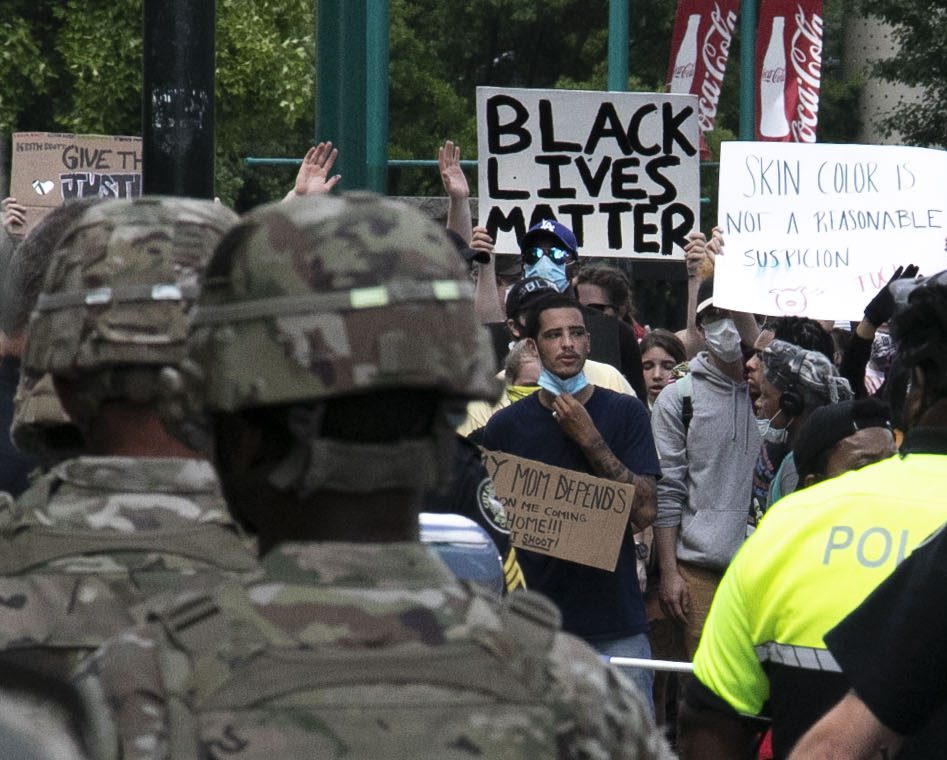The Black “New South” in Intellectual History
The idea of the New South has undergone numerous iterations in Southern history. From Henry Grady’s use of the term in the 1880s to designate a Southern United States open for business, to the utilization of the phrase by politicians such as Jimmy Carter to argue for a new, post-Civil Rights South, the idea of the New South has both given hope to Southerners that things have changed, and made clear just how far the region still has to go to be truly “new” and free of its slavery and segregationist past. But for Black intellectuals, the idea of the New South has also been critical since the end of Reconstruction. For them, however, it has less been an idea about Southern economic prosperity, or the growth of commerce, and more a concern about how the South can paper over its issues with a fresh coat of ideological paint.
In the early twentieth century, W.E.B. Du Bois vociferously argued against the New South Creed, fearing that it was emblematic of a larger problem in American society: unfettered and uncritical love of wealth. In his The Souls of Black Folk chapter entitled “On the Wings of Atalanta,” Du Bois cautioned against the greed underpinning ideas about a New South: “Atlanta must not lead the South to dream of material prosperity as the touchstone of all success.” In particular, Du Bois warned that the idea of the New South threatened to destroy what Black Americans desperately built during and after Reconstruction. “In the black world,” wrote Du Bois, “the preacher and teacher embodied once the ideals of this people…but today the danger is that these ideals, with their simple beauty and weird inspiration, will suddenly sink to a question of cash and a lust for gold.”
This critique of the hollowness that Du Bois saw at the center of late nineteenth century New South ideas presaged his later critiques about college life for Black Americans in the twentieth century. The critique also serves as a natural pre-history for Du Bois of what scholars such as Andrew Douglas have termed as his criticism of “competitive society.” But Du Bois’ arguments against the creation of a New South ideal would be echoed by the New South ideas of the 1970s, and the pushback they received from Black Americans. In both cases, the critiques of the New South serve to highlight a broader issue: the relationship of Black Americans to a rapidly changing, and globalizing, economy. For both Southerners in the 1890s and 1970s, the quest to prove that the region was “open for business” to the rest of the world was paramount to everything else.
Magazines such as Time proclaimed the rise of a New South by the early 1970s. There, it was proclaimed that 1970 was the culmination of decades of struggle by civil rights activists to promote throughout “the region new political voices, new images, new goals.” Elsewhere, there was growing sentiment that the region was experiencing an even faster change of pace for Black Americans. Ebony magazine’s 1971 issue showcased “The South Today” for Black Americans. Within its pages, writers both emphasized how much the region had changed, and how much that promise hid the potential for disaster.
Historian Lerone Bennett, not surprisingly, warned readers via use of historical analogy. Every New South, Bennett warned, was little more than the product of “the Southern penchant for myth-making” that the former Confederacy, by the 1970s, was so good at. More importantly, Bennett took another analogy in vogue in the 1960s—that of the Second Reconstruction of the Civil Rights Movement—to remind readers of what happened after the glories of the First Reconstruction came to a decisive and violent end across the region. Bennett lamented the celebration of the latest “New South” of the 1970s by arguing for the importance of “remembering the failures of the New Souths of yesterday.” Grady’s New South, after all, was built on the bodies of those killed at Colfax, Hamburg, Liberty Place, and elsewhere.
In 1979, Ron Harris would write an essay critical of the New South idea. Nearly a decade after the latest iteration of the New South came into vogue across media, Harris pointed out that many Black Americans in the South found nothing impressive about the “New” South. “To be Black in the South,” argued Harris, “is, for the majority of Black people, still to be poor, undereducated, and socially isolated from the White community.” Or in the words of McArthur Hibbler, the New South was little more than “the Old South with a smile—a Jimmy Carter smile.” Consider that events later in 1979—mostly notably, the Greensboro Massacre in November of that year—confirmed to many that the hopes and dreams of a New South free of racism and murderous discrimination seemed like a pipe dream.
In the last three decades, books and magazine articles have continued to push the idea of yet another New South. This time, it is a South fitfully approaching a multiracial future. What, precisely, that future holds is anyone’s guess. While writers such as Imani Perry and Kiese Laymon ask Americans to critically think about what the South has been—and what it, potentially, could be—scholars broadly speaking continue to debate whether or not there has been a New South. Maurice Hobson’s brilliant work critiques the centrality of Atlanta to this narrative, and how its position as a capital of Black intellectual and cultural America affects this discussion. If there is a New South, we must ask what exactly makes it different from the “Old.”
Copyright © AAIHS. May not be reprinted without permission.
